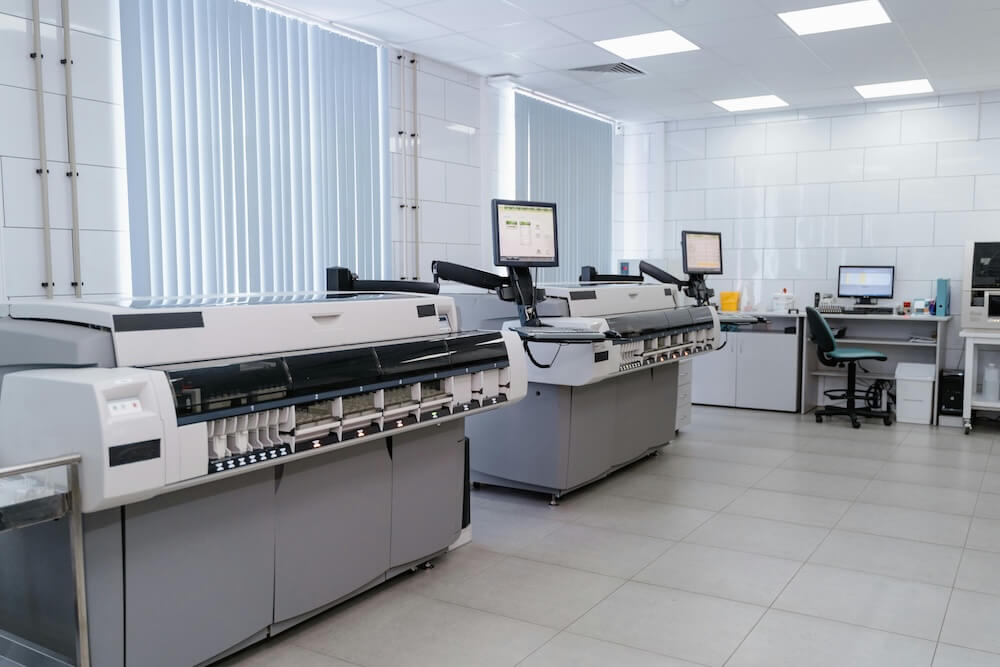In today’s fast-paced world, the demand for high-quality, customized prints has never been higher. Whether it’s packaging, labels, or marketing materials, businesses are constantly looking for ways to meet the evolving needs of their customers. One of the most significant advances in the printing industry in recent years is digital printing.
But what exactly is digital printing, and how does it differ from traditional printing methods like offset or flexographic printing? In this blog, we’ll explore the fundamentals of digital printing, how it works, its applications, and the benefits it offers to businesses across various industries.
What is Digital Printing?
Digital printing refers to a method where digital files (like PDFs, graphics, or photos) are sent directly to a printing press. Unlike traditional printing methods, which rely on physical plates or screens, digital printing uses inkjet or laser printers to apply ink or toner to the material. The ink is applied directly to the substrate without the need for intermediate steps, such as making printing plates or screens.
This technology allows for faster production times, shorter runs, and greater flexibility when it comes to customization. As a result, digital printing has become a preferred choice for short-run printing, personalized prints, and applications where speed and efficiency are essential.
How Does Digital Printing Work?
Digital printing works by transferring an image from a digital file onto a substrate (such as paper, film, fabric, or cardboard). The process typically involves one of the following methods:
- Inkjet Printing: Inkjet printers use microscopic nozzles to spray tiny droplets of ink onto the substrate. This method is commonly used for printing on paper, vinyl, and fabric. Inkjet printing allows for high-resolution images with rich color reproduction, making it ideal for producing high-quality prints like photos, posters, and marketing materials.
- Laser Printing: Laser printers use a laser beam to transfer toner onto a substrate. The laser scans the image onto a photosensitive drum, which then applies the toner to the material. Laser printing is generally used for office printing, documents, and short-run prints where high-speed and precision are crucial.
- Electrophotography: A hybrid technique commonly used in digital presses, it works similarly to laser printing but with more sophisticated imaging technologies for faster and higher-volume production. This method is popular in commercial printing and packaging industries.
- UV Printing: UV printers use ultraviolet light to cure the ink as it is applied to the material. This technology enables printing on a wide variety of substrates, including non-porous materials like plastics and metal, making it ideal for packaging and labels.
What Are the Key Benefits of Digital Printing?
Digital printing offers several advantages over traditional printing methods. These include:
1. Customization and Personalization
One of the biggest advantages of digital printing is its ability to produce customized or personalized prints with ease. Since digital printing does not require the setup of plates or screens, businesses can print smaller batches of highly customized materials. This makes it an excellent choice for applications such as personalized packaging, labels, direct mail, and marketing collateral.
For example, businesses can print individualized labels with names, product details, or designs that change from one print to another without requiring new plates for each version.
2. Cost-Effectiveness for Small Runs
Traditional printing methods like offset and flexographic often require large minimum orders to make them cost-effective. This can be a barrier for businesses that need smaller batches or test runs of their products. Digital printing, on the other hand, allows businesses to print in smaller quantities without sacrificing quality or significantly increasing cost. This is especially important for startups, small businesses, or those who need to create prototypes or samples.
3. Faster Turnaround Times
Because digital printing bypasses the need for the setup and drying times associated with other printing methods, it generally offers quicker turnaround times. This makes digital printing ideal for industries that need products fast, such as the fashion and food packaging industries, where speed to market is critical.
For example, a printing company can receive a digital file and begin printing immediately, without waiting for plates to be created, resulting in faster production times.
4. High-Quality Results
With advancements in digital printing technology, the quality of prints has greatly improved. Digital printers can produce sharp images, vibrant colors, and fine details, making it suitable for a wide range of products, from high-end packaging to luxury labels. Additionally, digital printing allows for consistent quality throughout the entire print run, ensuring that each print is as high quality as the last.
5. Sustainability
Digital printing is often considered more environmentally friendly than traditional methods, especially when it comes to waste reduction. Since digital printing uses precise amounts of ink and no plates or screens, there is less material waste. In addition, digital printing allows businesses to print on-demand, meaning they only produce the amount they need, reducing excess inventory and waste.
Many eco-conscious companies now opt for digital printing for their sustainable packaging needs and to support their green initiatives.
Applications of Digital Printing
Digital printing is used across a wide range of industries and applications. Here are some common uses:
- Packaging: Digital printing allows for the creation of small-batch packaging with unique designs, making it a favorite for custom packaging in the food, beverage, and cosmetics industries.
- Labels: From product labels to security labels, digital printing provides high-quality, fast-turnaround solutions for businesses of all sizes.
- Textiles: Digital printing is widely used in the fashion industry to print unique patterns on fabrics for apparel and home décor.
- Marketing Materials: Flyers, brochures, business cards, and posters are often printed using digital presses due to the ability to customize and print in smaller quantities.
- Books and Magazines: Digital printing has revolutionized the book publishing industry by allowing authors and publishers to print short-run books or even single copies as needed.
Is Digital Printing Right for You?
If you are looking for a printing method that offers speed, flexibility, and cost-effectiveness, digital printing might be the solution. It’s particularly ideal for businesses that require short runs, customization, and fast turnaround times. Whether you’re in the packaging, labeling, or marketing industries, digital printing can deliver exceptional quality with a smaller environmental footprint.
However, for larger print runs or projects requiring very specific ink colors or special coatings, traditional methods like offset printing may still be more suitable.
Conclusion: The Future of Digital Printing
As technology continues to advance, digital printing is poised to play an increasingly important role in the printing industry. From its ability to offer personalized products to its cost-effectiveness for smaller runs, digital printing is enabling businesses to meet the demands of a dynamic market while improving speed, sustainability, and flexibility.
In short, digital printing offers a versatile, eco-friendly, and high-quality solution for businesses looking to stay competitive in today’s fast-paced world.
By embracing digital printing, companies can not only reduce their production times and costs but also offer more customized products that resonate with customers, making it a valuable investment for the future.









